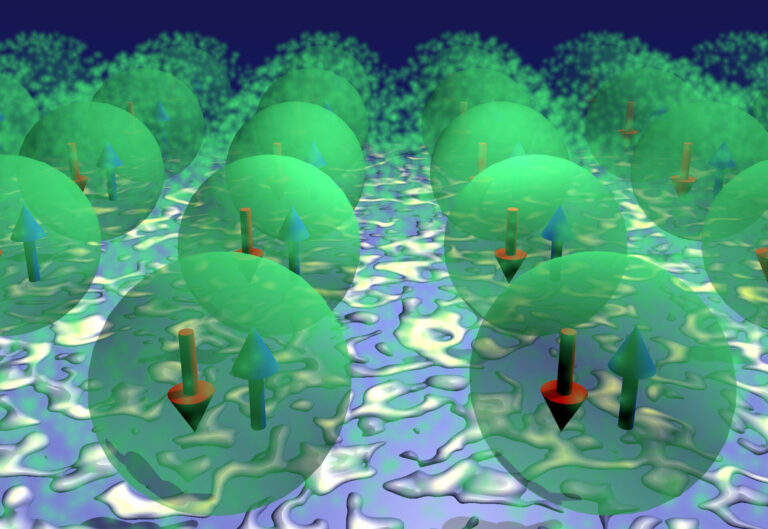Research Team Observes Quantum Entanglement Wave through Real-Space Measurements for the First Time
Triplons pose a considerable challenge for experimental observation due to their elusive nature. Typically, researchers face difficulty conducting tests on macroscopic materials, where measurements are averaged across the entire sample. Academy Research Fellow Robert Drost, the primary author of a paper in Physical Review Letters, emphasizes the unique advantage offered by designer quantum materials in overcoming these challenges.
These materials, which enable the creation of phenomena absent in natural compounds, facilitate the realization of exotic quantum excitations. The complexity of these designer quantum materials presents both exciting physics and challenges in identifying and studying the most exotic ones. Professor Peter Liljeroth, the head of the Atomic Scale Physics research group at Aalto University, highlights their innovative approach of constructing an artificial material using individual components. Quantum materials exhibit intricate electronic interactions at the microscopic level, resulting in phenomena such as high-temperature superconductivity and complex magnetic states.
The electronic correlations, governed by quantum mechanics, give rise to novel electronic states. For a pair of electrons, the singlet and triplet states represent two entangled states. Introducing energy to the electron system can transition it from the singlet to the triplet state. In certain cases, this excitation can propagate through a material as an entanglement wave known as a triplon. Notably absent in conventional magnetic materials, these excitations present a longstanding challenge in the measurement of quantum materials.

The team’s triplon experiments
In the recent investigation, the team utilized small organic molecules to fabricate an artificial quantum material exhibiting unconventional magnetic properties. Each cobalt-phthalocyanine molecule employed in the experiment possesses two frontier electrons. “With the use of straightforward molecular building blocks, we can engineer and explore this intricate quantum magnet in a manner unprecedented, unveiling phenomena not present in its individual components,” states Drost. “While magnetic excitations in isolated atoms have been observed for a long time using scanning tunneling spectroscopy, achieving this with propagating triplons is unprecedented.”
“These molecules enable us to aggregate electrons, confining them closely and compelling them to interact,” Drost continues. “Observing such a molecule externally, we witness the collective physics of both electrons. The inclusion of two electrons in our fundamental building block, rather than one, results in a distinctly different kind of physics.” The team initially tracked magnetic excitations within individual cobalt-phthalocyanine molecules and later extended their observations to larger structures such as molecular chains and islands. Progressing from simplicity to increasing complexity, the researchers aim to grasp emergent behavior in quantum materials.
In this study, the team successfully demonstrated that singlet-triplet excitations of their building blocks could traverse molecular networks as exotic magnetic quasiparticles known as triplons. “We illustrate the creation of an exotic quantum magnetic excitation in an artificial material. This approach showcases our ability to purposefully design material platforms that open up new prospects in quantum technologies,” notes Assistant Professor Jose Lado, a co-author of the study and head of the Correlated Quantum Materials research group at Aalto University.
The team intends to expand their methodology to more intricate building blocks, aiming to design additional exotic magnetic excitations and ordering in quantum materials. The systematic design using basic components not only aids in comprehending the intricate physics of correlated electron systems but also establishes novel platforms for designer quantum materials.
This article is republished from PhysORG under a Creative Commons license. Read the original article.
Do not forget to share your opinion with us to provide you with the best posts !




0 Comments